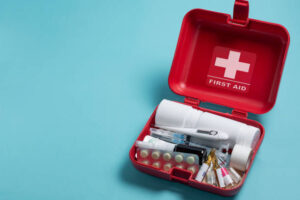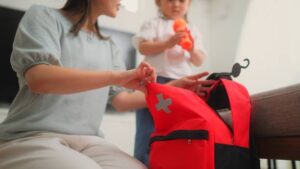Mastering first aid certification is valuable for many reasons. It can help save lives and aid people during medical emergencies. In today’s fast-paced world, injury or illness can occur at any time. By gaining first aid knowledge and skills, you empower yourself to assist others properly in potentially dangerous situations.
Whether you are pursuing the certification for a job requirement, to help your community, or to increase your competencies during medical crises, following these tested methods can help ensure your success.
This article reveals the top 3 strategies for excelling at first aid certification.

What Is First Aid Certification?
First aid certification demonstrates that a person has the skills and knowledge to administer basic medical aid before emergency medical services arrive on the scene.
Certification courses teach students how to treat minor injuries, manage medical emergencies like burns, bleeding, fractures, and allergic reactions, and perform CPR.
Obtaining first aid certification requires completing a hands-on training program where students learn and practice first aid techniques. At the end of the course, students pass a written and skills exam to become certified. Having first aid certification provides confidence in one’s abilities to handle injuries and medical issues until emergency help arrives. It is also often required for certain jobs.
To master the first aid certification, follow the below-mentioned tips:
Take Accredited First Aid Training Courses – First aid certification is only possible by enrolling in accredited training courses. These accredited first-aid courses provide you with the necessary knowledge and skills. So, if you are researching courses, choose those that reputable accreditation bodies have approved. Accredited training ensures that curriculums meet industry standards. For example, organizations such as the Emergency Cardiovascular Care Committee set national guidelines that many associations follow. All program providers teach the skills and information consistently and accurately.
Courses also provide first aid certifications that are valid for some time, usually two years. To maintain current credentials, you must continue to learn. Compare first aid training options and confirm that the certification is from a recognized body.
A course’s scope is an important factor when selecting a program. You should look for courses that teach various basic first-aid skills, not just one or two. The courses have to include at least life-saving skills like CPR and bleeding control. They should also cover treating injuries and common medical emergencies such as breathing, circulation, or illness.
Regularly review and practice your skills
 Mastery is not achieved by completing just one course. It is important to continue practicing and reviewing skills to maintain proficiency. The inability to reinforce the learning can lead to deterioration in skills, which is detrimental when faced with real-life emergencies. Developing a regular practice regime ensures capabilities are maintained post-certification.
Mastery is not achieved by completing just one course. It is important to continue practicing and reviewing skills to maintain proficiency. The inability to reinforce the learning can lead to deterioration in skills, which is detrimental when faced with real-life emergencies. Developing a regular practice regime ensures capabilities are maintained post-certification.
To develop muscle memory, it is important to practice the techniques that you have learned. Regularly review the steps to perform CPR, control bleeding, splint injuries, and any other response. Weekly or monthly, set aside time to review skills alone or with practice partners. Reflect on areas in need of further improvement based on your performance.
It is more engaging to develop simulated scenarios than to practice isolated skills. Create mock emergencies involving classmates. Students need to evaluate patients and respond with methodical first aid. Simulations allow students to experience different scenarios by taking on the victim and rescuer roles.
Look for additional training opportunities
 Once you have a basic first aid certification, it is time to seek additional specialized training. Additional coursework provides a deeper dive into specific medical response fields applicable to varying careers or interest areas. The certifications increase the individual’s responsibility and credibility when they rely on their skills.
Once you have a basic first aid certification, it is time to seek additional specialized training. Additional coursework provides a deeper dive into specific medical response fields applicable to varying careers or interest areas. The certifications increase the individual’s responsibility and credibility when they rely on their skills.
For example, wilderness medicine requires skills in wound management, identifying environmental illnesses, and splinting, all with limited resources. Wilderness First Responder training teaches you these skills.
The needs of children are different from those of adults. These courses emphasize the treatment of injuries and illnesses that are common in infants and young children. The smaller size of children and infants also require modified CPR and rescue breathing techniques.
Emergency Medical Technicians (EMT) and Advanced Cardiac Life Support (ACLS) are other higher-level certifications that confer more advanced responsibilities. The intensive courses are designed to prepare first responders for the time-sensitive nature of their work.
Conclusion
To become truly competent in first-aid techniques, you must take a multi-faceted approach. This goes beyond just a basic course. By investing in accredited programs, regular practice is followed by reviewing materials and participating in supplemental education opportunities. This reinforces the knowledge you have gained in the long term.
Moreover, by adopting a lifelong learning mindset, you can ensure your first aid abilities remain sharp to make an impact in future emergencies. It takes a lot of commitment to master first aid certification, but it can be rewarding because you have a stronger ability to save people’s lives.








Leave a Reply